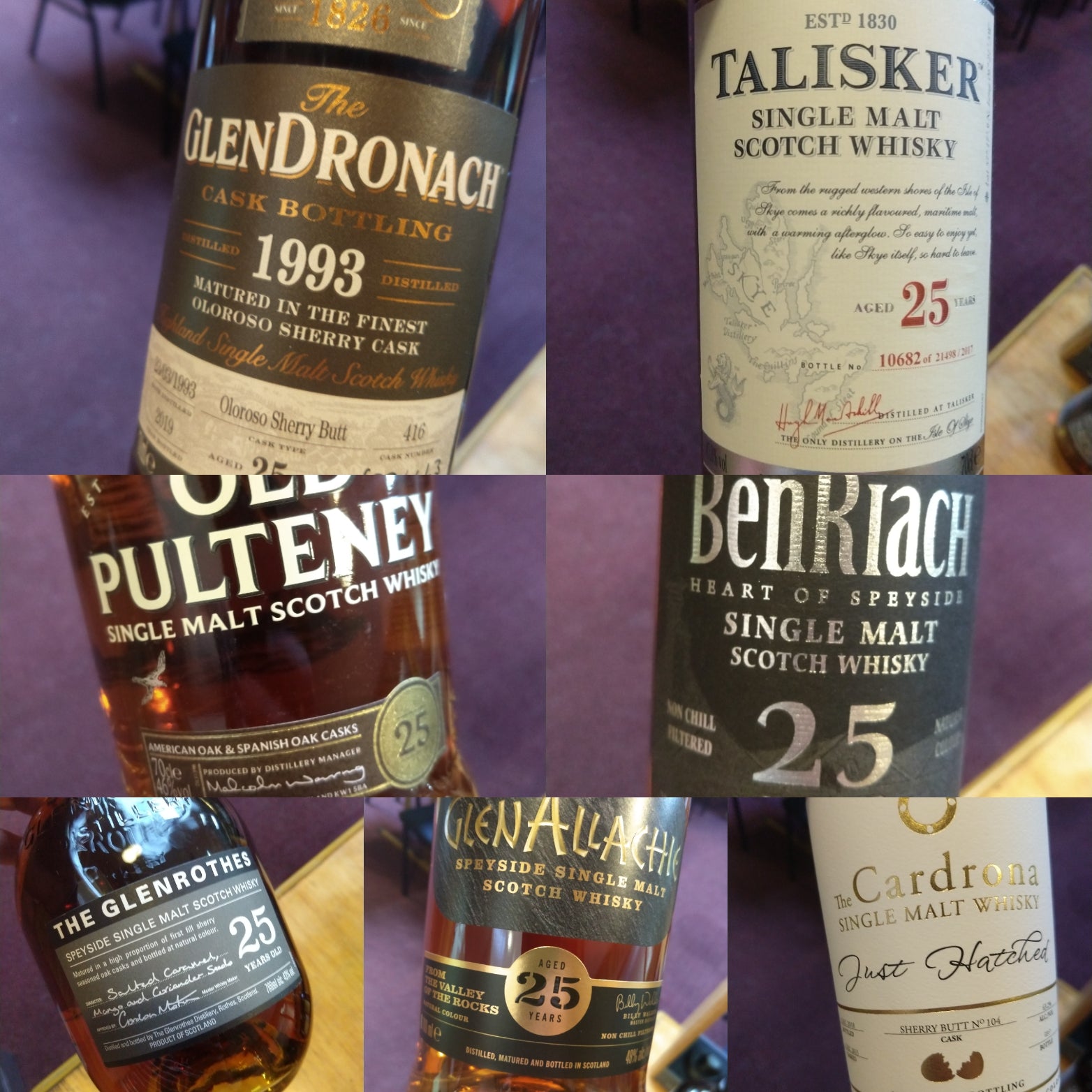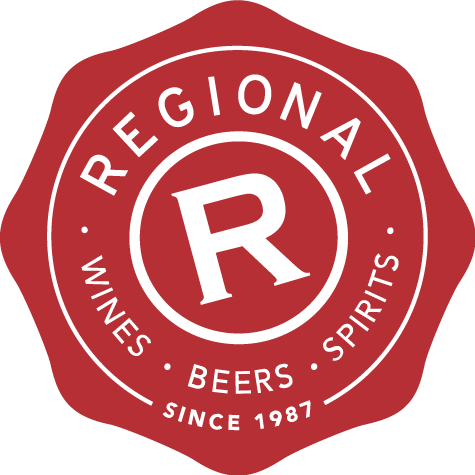
Twenty five years of whisky
25 Years of whisky at Regional Wines - Daniel Bruce McLaren's 25th Anniversary tastings at Regional Wines
With the exception of the Regional Wines tasting room, a lot has changed over the last 25 years. Back then you could purchase a house in Wellington for peanuts. Likewise, you could put on whisky tastings that included the Springbank 1966 Local Barley, Springbank 35yo and 25yo without batting an eyelid (see image below). That tasting would now cost somewhere in the region of $600 per person. Of course, 25 years has made some of these whiskies much more collectible, but regardless, it illustrates a point nicely and that point is this - whisky is a very different game to what it was back then.
In 1995 the whisky industry was just reappearing from the effects of the Whisky Loch of the late 70s and the downturn in production through the 80s - it was becoming fashionable again - so much so that mothballed distilleries such as Ardbeg were re-opening and starting to distill once again, releasing a slew of young whiskies as they went. Interest rates that had been around 10-15% in the 80s and early 90s started their gradual descent to where we find them now - basically at zero. In the same period, palates have refined and demand for whisky has grown, new markets in Asia have appeared and the rise of the whisky collector has happened. Of course, the world population has also boomed.
So the dynamics of supply, demand and cheap money have thus seen house prices march upwards, followed closely by “commodities” such as whisky. Add to this the back flow from the secondary market (if you can flip a bottle overnight for twice that which you purchased it - then the effect will be that whisky in general will be released at increasingly higher prices), and it becomes obvious that there is little working against this trend.
The industry is out of kilter - and theories of another Whisky Loch based on the recent boom in new distilleries and general expansion by the bigger producers in the face of increased demand, seem just as popular as those of imminent whisky shortages due to a lack of foresight in restocking old inventories (as recently seen with popular Asian whiskies). Of course, a world at a stand still thanks to a global pandemic will not have helped the latter.
Then there’s the effects of various tit-for-tat trade wars which have seen 25% increases on Scotch import tariffs into the US, and the uncertainties of Brexit which looms on the horizon and, so, it is fair to say that the future of whisky is murky at best.
But the modern whisky craze also brings an air of excitement too. As mentioned, It has resulted in an explosion of new distilleries from a multitude of countries, forced new and innovative takes on a traditional industry as craft beer and gin producers enter the fray and has, arguably, helped force the SWA to change its rules on just what casks are allowed for ageing Scotch (or was that just Diageo?). In many ways, we are in a whisky renaissance, an era that may well be looked back on as a Golden era in years to come… well, maybe.
It’s hard not to look back at the past through rose tinted spectacles, especially when you’re doing so via the whiskies of then that are still available today.The good and great whiskies of yesteryear are the ones that have lasted into the now (such as the Springbank 1966 Local Barley), either hoarded by collectors or endlessly reminisced on by critics and, of course, they have gone up in value. But don’t forget, there was a lot of average whisky being made back in the day too, it’s just that those whiskies have been consumed and forgotten about.
And so the whisky industry, despite all its tradition and dependence on time as an ingredient - is one that is constantly evolving and at a relatively rapid rate too - and this is really what makes it so exciting. Congrats to Daniel Bruce McLaren for keeping an even keel and steering us through 25 years of liquid gold at Regional Wines. It’s good to know that whatever the future holds - Daniel will be there to raise a dram, and get us thinking about what it is that makes whisky tick…
Here’s some notes and scores on the lineup that, dare I say it, lived up to expectation.
Glenrothes 25 YO 700ml 43% - 8.6
Underrate this whisky at your peril! I’ve been lucky enough to sit on a bottle of this for a while at home and it’s a profound whisky whose depths take a while to discover. Toffee apple, ginger snaps and a complexing whiff of sulphur on the nose followed by citrus, licorice and a savoury burnt quality which balances the fruit nicely. Finishes long and meaty. Yeah it’s only 43% but, trust me, as a result you can drink this all night if you’re not careful.
Talisker 25 YO 45.80% - 8.95
Oh I do like to be beside the seaside! The salty sea breeze, the call of the oystercatcher (arf arf), swarthy old fishermen smoking roll ups whilst gutting freshly caught mackerel. This is old peat in all its splendour and, yet, an expression that has not mellowed as much as one might expect after 25 years. It’s a journey for sure; green apples, cut grass and peat give way to Xmas ham piqued with cloves and served with a bourbon, that then develop into shortbread, brioche and biscotti. This is a whisky with personality - you’d find him in a bar in a sharp suit, smoking a cuban cigar whilst eating a lemon meringue pie.
The Cardrona 2015 Single Malt 3 YO Ex-Oloroso Sherry Butt #104 63.2% - 8.18
Youngsters should be seen and not heard, but this one was screaming from the top of it’s voice with scant respect for its elders. I tried this when it first came out and struggled with the alcohol - but a few years on my palate is obviously (even) more jaded and I really began enjoying it by the second night. Certainly divided the room. It’s a real powerhouse whisky and one can’t quite help wondering just how good it could have been with 10 more years in the cask. Here’s a question for those who have tried both - would you rather have 375mls of this, or a full bottle of the latest Ardnamurchan?
Glendronach 25 YO 1993 #416 Oloroso Butt 51.2% - 9.45 (winner)
Hellooooo olorosoooooo. This stood out as much as the 3 year old, but for its typically big sherry and dried fruit flavours that we have all come to love from a decent single cask GlenDronach. These old GlenDronachs can show superb alcohol integration and the hope was that it would be hard to spot against some of the 46% whiskies, but it was just in a league of its own.
GlenAllachie 25 YO 48% - 8.54
Up to this point, the whiskies had given themselves away pretty easily through some sort of trademark. Peat in the case of the Talisker, high alcohol from the Cardrona, big sherry from the GlenDronach and classy elegance from the Glenfarclas - but the final three were more subtle and similar in style with more evidence of bourbon and American oak and the guesswork got trickier. This one had a hard act to follow and really was the chalk to the GlenDronach’s full fat cheese. More linear through the palate and more mineral, with a certain musty dankness (think wet wood and putty) compared to the round fruit bomb that had preceded it.
Mystery Whisky - Old Pulteney 25yo 46% - 8.93
Plenty going on in this one with green apples and lollies, resin, tobacco and again that musty note. The malt was still there though and given every chance to shine which made it stand out compared to some of the caskier whiskies. A marriage of American and Spanish oak ex-oloroso, but it really spoke of bourbon more than anything, so, presumably its time ageing in Spanish oak had been relatively short.
Benriach 25 YO 46.8% - 8.9
A class act for sure which brought together the best elements of the previous two. There were definite flavours of US oak but which combined elegantly with complexing sherry notes; ginger bread, demerara and salted caramel - all rather balanced and nothing overpowering. There was depth on the finish too with custard and meaty elements vying for attention.
And there we go, I wonder what the lineup will be like for Daniel’s 50th?!

